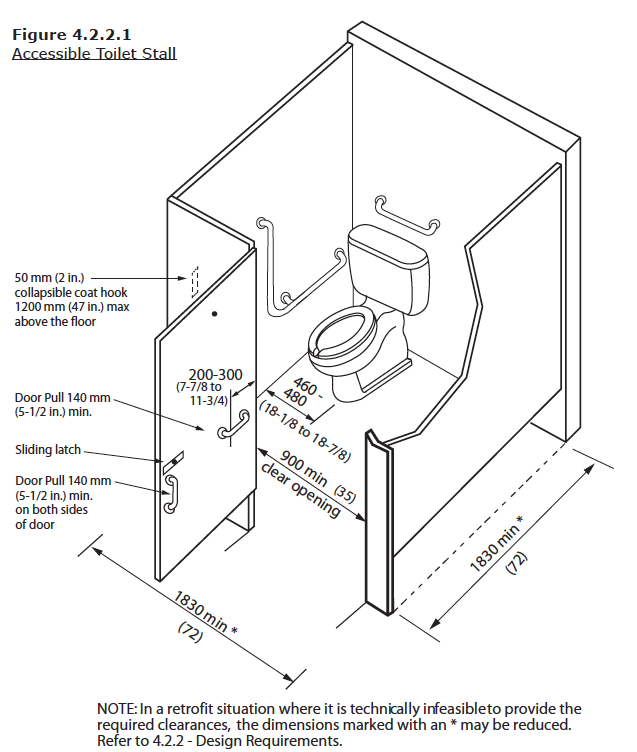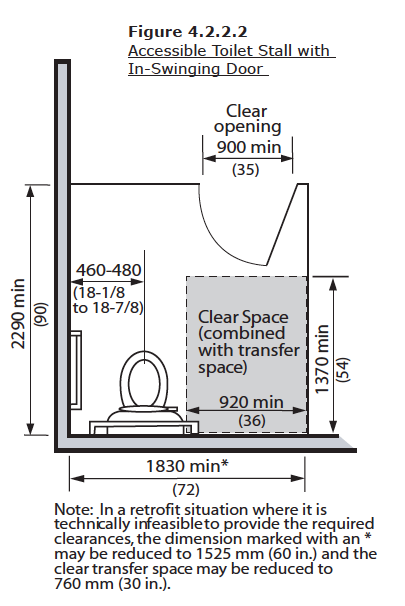


Accessible Standards for Ontario universal washrooms should already exist in your organization. One of the current priorities of the Accessibility for Ontarians with Disabilities Act (the “AODA”) is to build an accessible Ontario by 2025. Some of the amendments are about universal washrooms. The New Accessibility Amendments to Ontario’s Building Code came into effect on January 1, 2015. “People with disabilities account for an estimated $25 billion in national consumer spending each year. This group is also estimated to influence the spending decisions of 12 to 15 million other Canadians.” – RBC Financial Group Study, 2008
15.5% of Ontario’s population has a disability, a number that will continue to rise with the aging population.
We asked wheelchair users what they look for in an accessible space. Here is what they had to say!
THE GOOD:
THE BAD:
Recent amendments to Ontario’s Building Code
The amendments will come into effect on January 1, 2015. It mainly applies to newly constructed buildings and existing buildings that will undergo extensive renovation. These are in addition to existing Ontario building codes.
Barrier-free path of travel: includes new requirements for power-door operators at entrances & vestibule entrances; updated door width, passing hall space, and curb ramp dimensions;
Access to all floors within a building: this change will require elevator access to all floors within a building. Exception: Restaurants will not be required to provide access to upper floors if the same amenities are provided on all floors.
Visual fire safety devices: amendments expand the range of areas where visual fire alarms will be required. This includes the inside of all barrier-free and universal washrooms.
Washrooms: the amendments update the requirements for barrier-free and universal washrooms, including requirements for public door operators; new mounting height and location requirements for washroom accessories; new fold-down grab bar options to allow for transfer space on both sides of toilet; requirement of an L-shaped grab bar in all cases; and increasing the minimum required clear floor area.
Please note: This is not an exhaustive list of the amendments. For more information, visit http://www.mah.gov.on.ca/Page10547.aspx.
Is your washroom wheelchair accessible?
Washrooms are a common problem area in terms of accessibility.
There are different guidelines for what makes a washroom space barrier-free. We have compiled a list of what we think are the most commonly used measurements and recommendations.
Below are two diagrams of what an accessible washroom might look like and some great features in your space.